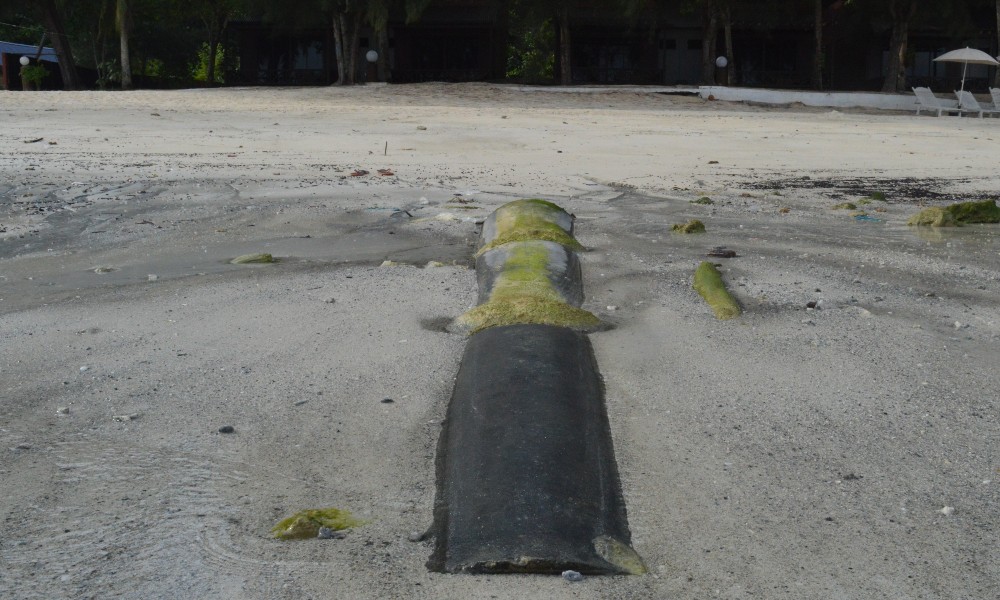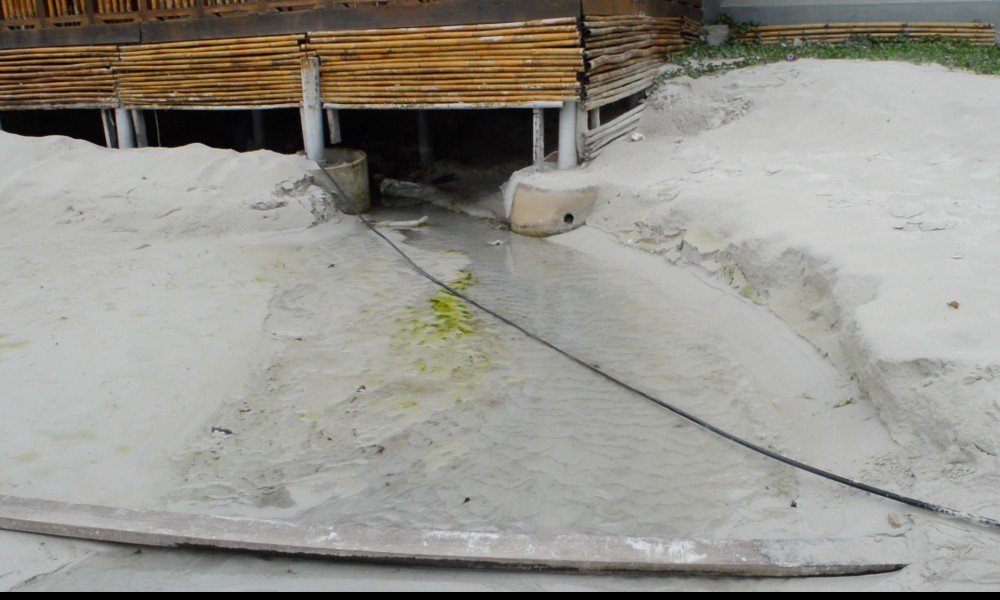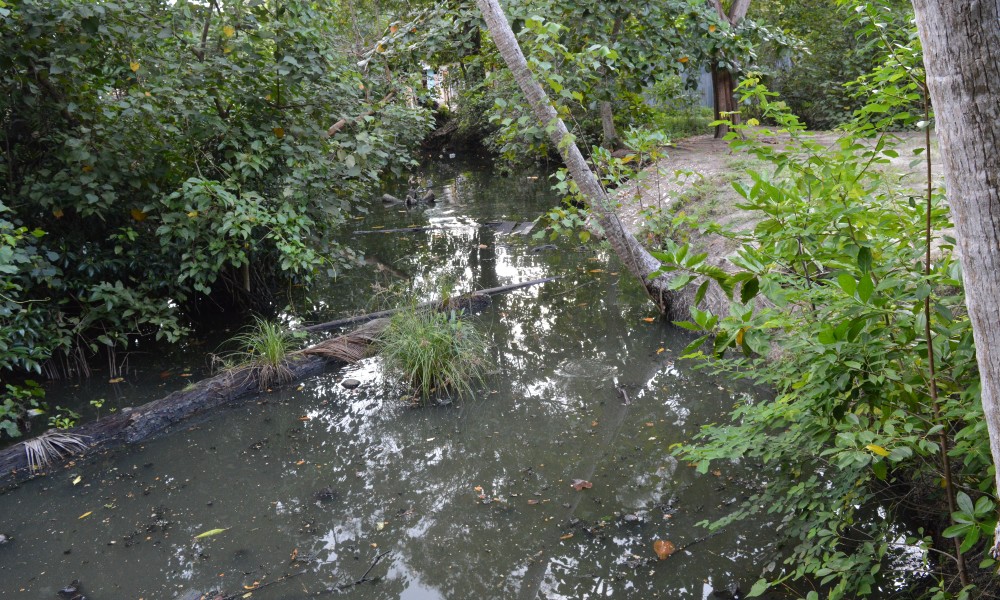Snorkelling, diving, and swimming at the beach are favourite activities in the country's stunning island resorts but unbeknownst to many, holidaymakers may be paddling in human excrement.
This is because for decades, lack of proper facilities to treat sewage on island resorts mean untreated wastewater are channelled directly into the sea, Malaysiakini’s investigation into the matter on the Perhentian and Redang islands found.
The practice, although unsavoury, is largely in compliance with the Department of Environment’s (DOE) requirements.
Checks found small resort owners generally use septic tanks, of which contents are cleared of sludge and effluents before channeled into the ocean, in compliance with the Environmental Quality Act 1974.
This is also the case for larger resorts that use their own small sewage treatment systems or individual septic tanks.
However, according to regulations, these tanks must first be registered and approved by the National Water Services Commission.
Malaysiakini’s investigations found that not all resorts obtained the required approval, indicating that wastewater channeled into the sea may not comply with the standards set by the Act.
The issue is compounded by the treatment of wastewater from domestic users, known as sullage. It is learnt that sullage is allowed to flow directly into the sea or into ponds and inland streams, ultimately polluting the sea.
Indah Water Konsortium director of operations for Terengganu and Kelantan Edlyn Surya Abu Bakar said this is because the volume of sullage is greater than effluents and the practice of releasing it into drainage systems means it will find its way to water near the beach.
She said the correct practice is to use a marine outflow that directs the water more than a kilometre away from the beach to be released into the open sea.
However, this is not used on some islands. Even resorts with well-functioning small sewage treatment systems frequently discharge treated water directly into waters near crowded beaches, thus breaching Environmental Quality Act regulations, checks have found.

When resorts allow sewage, sullage, and sludge to spew into the sea, this causes an increase in nutrient content and other pollutants in the waters. This, in turn, encourages algae bloom and results in a depletion of live coral cover (LCC), studies have found.
The LCC is a measure of the proportion of reef surface covered by live stony coral instead of sponges, algae, or other organisms, and is considered the most efficient indicator of coral reef health.
In the 2000s, the waters of Terengganu used to boast an LCC in the 50 percent range, according to a study by Reef Check, an NGO that receives an annual grant from the Department of Marine Parks (DMPM) to assess the health of reefs in Malaysia.
However, in 2020, the Perhentian Islands saw a decline of LCC to 38.13 percent while Redang Island had an LCC of 36.61 percent.
Some coral destruction in 2019 may be attributed to the Pabuk tropical storm. However, both islands have recorded a high pollution indicator of 30.88 percent and 36.61 percent respectively.
The pollution is likely caused by operations of hotels and resorts on the island, Reef Check said.
Resort development and the matter of sewage from these resorts are a murky matter, as the issue falls under the purview of various agencies at both state and federal levels.
Marine parks fall under the purview of the federal government, while issues related to water, drainage, sewage, solid waste, and other utilities are governed by the local council.
Resort development is approved by the state’s Economic Planning Unit, which also oversees tourism, planning, and development issues, while the DOE ensures compliance with the Environmental Quality Act, including the need for an environmental impact assessment if required.

Legally speaking, local councils are the last defence when it comes to sewage flowing straight to the sea, said Malaysian Bar Council’s Saha Deva Arunasalam said.
Saha, who is the deputy co-chair of the council’s environmental and climate change committee, said though the Environmental Quality Act calls for an environmental impact assessment before resort development is approved, the implementation of a proper sewage system is not a condition for approval.
The onus, he said, falls on the local authorities to ensure the resorts operate with proper systems.
Attempts made to contact the Besut District Council president about the matter on the Perhentian Islands were unsuccessful.
Instead, a council officer who spoke to Malaysiakini on condition of anonymity, said oftentimes, plans are drawn up, or issues are investigated and solutions proposed, but before they can be implemented, the officer in charge may be transferred to a different division.
“The previous officers probably knew, but most of us are new here. This will be raised at the next district meeting, then we will have a clearer picture.
“The new officer will have a new agenda, and so unless someone complains or raises the issue, it gets forgotten,” she explained.
When contacted, the DMPM said it is only responsible for issues in the waters around the islands gazetted as marine parks.
In an e-mail, the department said they monitor the waters around marine parks and provide opinions on pollution issues via the Besut District Action Committee to agencies such as the DOE for action to be taken under the relevant acts and regulations.
According to environmental impact assessments, resorts are also required to regularly submit a water quality report from their small sewage treatment systems to the DOE.
However, checks with resorts found many are not aware of this requirement.
Despite attempts to obtain clarification, at the time of writing, the DOE had not responded.
How small operators deal with sewage problem
Over a decade ago, a popular way to deal with sewage was for resort operators to open their full septic tanks and let the tides flush them out at night, said one resort operator on condition of anonymity.
Edlyn confirmed the practice was prevalent at one point, prompting Indah Water to conduct a study on sewage pollution at the Perhentian Islands in 2005.
“In 2010, an international NGO highlighted the presence of the bacteria E-coli on Long Beach, Perhentian Kecil.
"This led to the realisation that resorts were not just spewing sewage directly into the sea, but sullage water was being released directly into drainage systems that lead to the sea, causing high content of the E-coli bacteria in the waters,” she said.
However, more recently, a common method is to pump the sewage into the island’s hills, resort owners said.
Abdul Aziz Che Abdullah owns Mama Chalet on the white sandy beaches of Perhentian Besar Island.
He said the resort uses a system where sludge and solid waste are separated from wastewater, and effluents are pumped up the hill to seep into the ground, instead of channeled into the sea. The filtered sludge is then used as manure.
Lee Khing Kit, co-owner of Tuna Bay Resort, said the resort employs the Biorobic system, whereby effluents are 60 percent treated, complying with the Environmental Quality Act.
He said Perhentian has been gazetted as a marine park thus requiring effluents to comply with Standard A in the Act in order to release effluents into the sea.
Essentially, this means effluents must be released into retention ponds for reuse or released into the ground.
Therefore, like Mama Chalet, Tuna Bay pumps effluents from its retention pond up a hill where it is expected to seep naturally into the ground.
Calls to several resorts on Perhentian Besar and Kecil Islands verified that this method is popularly utilised on both islands.
Unfortunately, this has not helped the water quality of inland rivers on the island. A survey by the DMPM on the water quality of inland rivers and streams on both Redang and Perhentian Islands in 2017 and 2018 revealed high nitrate content.

The survey results were particularly alarming for Redang with the river running on its east coast registering a poor Water Quality Index (WQI) of 26.
On Perhentian Besar Island, the river at Teluk Dalam registered the lowest WQI at 58.4, which falls under Class III, with Class I being the best and Class V indicating a ‘dead river’.
Both rivers on Redang and Perhentian were located in areas of high resort density.
Rivers or streams on marine parks should register as Class I or a score above 92.7.
However, a DMPM spokesperson said all the rivers on Perhentian and Redang Islands recorded WQI Class III and II.
This indicates the need to address activities of releasing effluents into leach fields or ‘pumping up the hills’, the spokesperson said.
Otherwise, the bid to save the oceans and corals may end up hurting the rivers instead. - Mkini




No comments:
Post a Comment
Note: Only a member of this blog may post a comment.